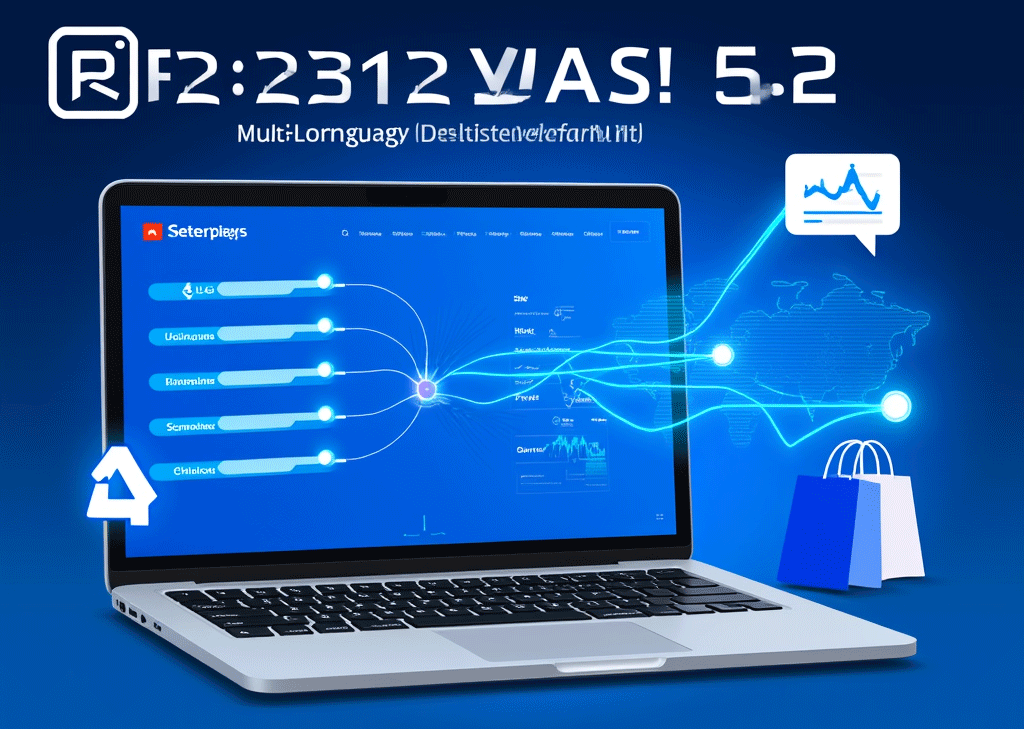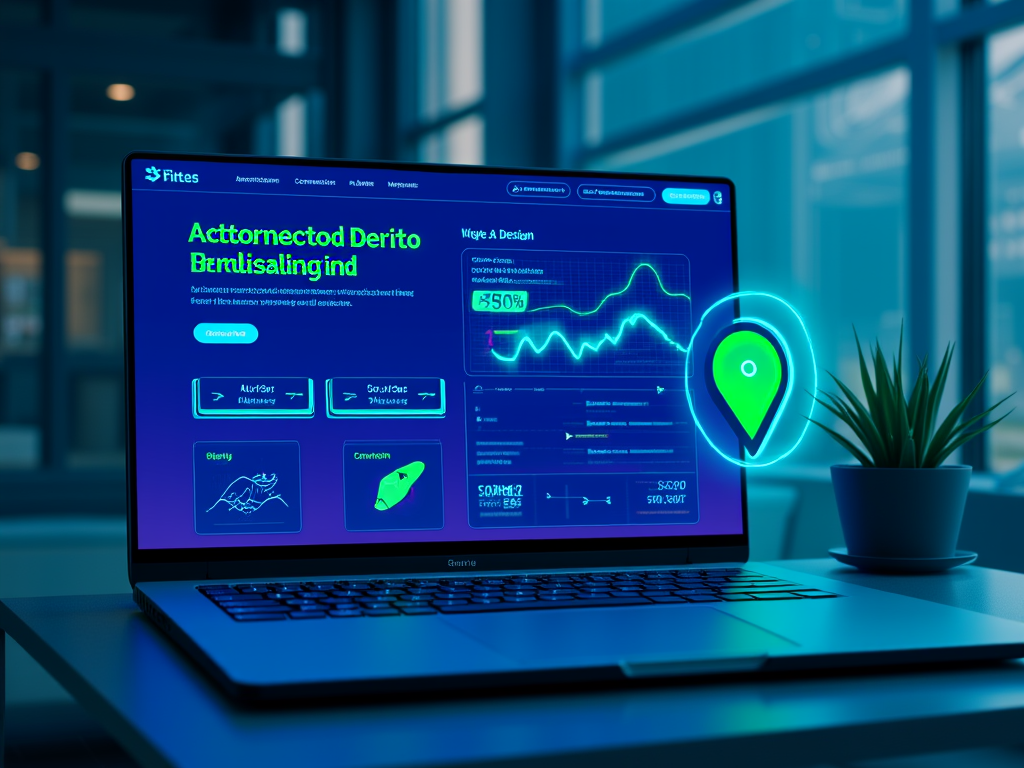Benefits of multi-language website development
Introduction
In an era where digital boundaries dissolve with a click, the significance of multi-language website development stands out as a beacon for businesses looking to thrive on the global stage. Imagine being able to converse with millions, not just a handful, embracing the richness of diverse cultures while inviting them into your brand’s narrative. Creating a multilingual website isn’t merely a technical task—it’s a heartfelt invitation to audiences around the world, inviting them to connect, engage, and trust.
Expanding Market Reach and Global Sales Opportunities
Why limit your voice to a single language? The world speaks in many tongues, and every new language you integrate into your website opens doors to thrilling possibilities. Businesses that embrace linguistic diversity do more than increase their visibility—they capture hearts and minds.
-
Embracing natural preferences: Research reveals that around 73% of people prefer browsing websites in their native language. It’s about trust, comfort, a seamless conversation, like a warm cup of coffee shared between friends. Wouldn’t you feel more at home reading content that speaks directly to you?
-
Growing sales potential: Think of each new language as a key that unlocks a fresh market. Countries with burgeoning digital landscapes are waiting for your products. Imagine standing on the bustling streets of Madrid, Seoul, or São Paulo, ready to engage consumers who would otherwise miss your offerings due to language barriers.
-
Efficient entry strategy: Setting up shop overseas can be daunting. However, translating your website’s pages is a fraction of the cost and effort involved in traditional expansion. It’s like having an instant ticket to thriving e-commerce hubs without the complications of international bureaucracy.
Enhanced SEO and Search Engine Presence
Every global journey begins with visibility. Entering a multilingual space isn’t merely about language; it’s about mastering the art of Search Engine Optimization (SEO) in a world that rewards diversity.
-
Localized SEO practices: By implementing targeted keyword strategies in various languages, you position your brand to appear in search results tailored to your audience’s preferences. What if your product was one of the top results on a local search engine? It creates a buzzing community around your brand and amplifies interactions that lead to conversions.
-
Diverse URL structures: Organizing your multilingual content with clear structures—like yoursite.com/en for English and yoursite.com/fr for French—signals to both users and search engines where they can find the specific information they seek. It’s all about clarity and accessibility!
-
Tapping into regional search engines: With global markets come various search engines tailored to specific regions. Think about it: investing in multilingual content allows you to appear on platforms like Baidu or Yandex, capturing attention from users who might have otherwise overlooked your offerings.
Improving User Experience and Brand Perception
What resonates more deeply than words? It’s the connection formed through shared understanding. Crafting your ecommerce landscape in multiple languages offers an exceptional user experience, building a bridge of trust between your brand and potential customers.
-
Personalized engagement: Connecting with users in their native tongues fosters an environment where they feel valued. When they encounter content that speaks directly to them, the emotional connection translates into brand loyalty. Picture a user smiling as they navigate through a website that feels tailor-made for them; that’s the magic you’re creating!
-
Consistent brand messaging: A multilingual website is a testament to a brand’s ability to adapt and resonate with different cultures. The authenticity of your brand shines through when users recognize your unwavering identity, no matter the language they choose. Different languages, same heartbeat.
-
Accessibility and inclusivity: Embracing multiple languages means embracing diversity. You welcome users with various language-related needs while ensuring your content is accessible to all. This commitment to inclusivity not only increases your audience but enhances brand sentiment across demographics.
Localization and Cultural Relevance
To truly connect with a global audience, it's essential to understand that translation is just the beginning. Localization takes it a step further, ensuring that your brand speaks not just the right language, but also aligns with cultural nuances.
-
Tailored content: Localization transcends mere words. Imagine adjusting not just your language but also formats, visuals, and even humor to match cultural values. It’s like dressing your brand in culturally relevant attire—crafted and tailored for every specific audience.
-
Design considerations: Languages differ not only in words but in structure. Some languages expand or contract, change direction or rhythm. Every detail matters. Imagine a user scrolling through a site that's as beautiful as it is functional, seamlessly navigating through their experience, regardless of language.
-
Language detection and switchers: Instill user empowerment by allowing visitors to choose their language. Automatic detection based on browser settings ensures users are greeted in a language they're comfortable with. Picture that moment of surprise and delight when they’re welcomed in their preferred dialect!
Maintenance and Consistency
The journey doesn’t end once you launch a multi-language website. It’s a commitment, a continuous process of nurturing the relationship you cultivate with your audience.
-
Linguistic asset management: Employing effective tools like translation memories and glossaries ensures your brand’s voice remains consistent across different translations. Imagine maintaining a distinctive tone, no matter how many languages you explore.
-
Regular testing: An effective website requires a thorough examination. Periodically checking navigation, layouts, and even loading speed for each language version ensures that your dedication to service shines through.
Building a multi-language website is not just a technical feat—it’s a rich tapestry interwoven with the diverse threads of culture, communication, and connection. Through understanding the complexities of language, SEO, localization, and user engagement, businesses can create an inviting space where every visitor feels valued and recognized. Embracing this journey holds the promise of not just expanded reach, but also a pathway to forge deeper relationships that resonate across the globe.
FINDDOMAIN.GE (Internet services LLC) is a very interesting and rapidly developing IT company. The main directions are: web development, domain and web hosting. It also offers clients sub-services and outsourcing related to the main services.
BEST OFFERS:
Do you want to create your own company website or create your own online business on the Internet?
– WEB HOSTING
– DOMAIN REGISTRATION
– WEB DEVELOPMENT
– SITE BUILDER



Measuring Success in Multi-language Websites
As you embark on your multi-language journey, it’s vital to understand how to gauge the success of your efforts. What metrics matter the most? How can you tell if your multilingual strategy is paying off?
Tracking Analytics
Utilizing advanced analytics tools allows for real-time tracking of user engagement and behavior across your multilingual content.
-
User engagement metrics: Monitor bounce rates, time spent on page, and user flow in different languages. Analyzing which pages draw in visitors and what content holds their attention can reveal valuable insights.
-
Conversion rates: Evaluate how effectively each language version converts visitors into customers. Think of this as checking the pulse of your market. Does the Spanish version of your site see fewer conversions than the English one? This could indicate the need for further localization or adjustment in marketing strategies.
-
Feedback loops: Encourage users to provide feedback on their experience through surveys or reviews. Direct insight into their preferences can lead to continuous improvement and greater satisfaction. Create an emotional connection by letting them know their input matters!
Continuous Improvement Through User Insights
The world of digital commerce shifts constantly. To stay relevant, businesses must adapt alongside their audiences. Understanding user insights transforms your approach from reactive to proactive.
Conducting Usability Tests
Incorporating usability testing into your strategy helps identify challenges that users may encounter when navigating your multilingual site.
-
A/B testing: Run experiments with variations of content in different languages. For example, test particular headlines or calls to action. This method allows you to uncover what resonates best in each target market.
-
Focus groups: Invite diverse groups to interact with your site in their native language. Their experiences will provide direct feedback, enabling you to refine the bilingual user experience. Picture a lively room filled with conversations about the website, each voice providing a note that harmonizes your brand's message.
Adapting to Cultural Context
Cultural relevance is a moving target. Embrace the diversity of your audience by regularly updating content to reflect cultural events, holidays, or trends relevant to each region you serve.
-
Seasonal promotions: Tailor marketing campaigns around holidays unique to each culture—think “Día de los Muertos” in Mexico or “Bastille Day” in France. A well-crafted message during such moments can showcase your brand’s commitment to community.
-
Responsive engagement: Stay ahead of emerging trends and make quick adjustments in line with changing cultural dynamics. Flexibility is key; after all, what’s in vogue today may shift by tomorrow.
Building a Strong Multilingual Brand Image
Consistency is critical when maintaining your brand identity across multiple languages. Your core values must transcend linguistic boundaries, creating a unified image.
Crafting a Unified Voice
While localization is crucial, maintaining a recognizable brand voice is equally essential.
-
Brand guidelines: Develop comprehensive style guides for translations, emphasizing tone, vocabulary, and voice. Think of it as a blueprint guiding every language, ensuring your brand identity doesn’t get lost in translation.
-
Cross-language cultural training: Equip your team with in-depth understanding of cultural sensitivities associated with each language and market. This training enhances empathy, allowing for communication that truly resonates with each audience.
Showcasing Success Stories
Highlighting customer success stories from different markets is an excellent way to create social proof. Sharing testimonials from clients who’ve had positive experiences adds authenticity to your brand message.
- Diverse testimonials: Feature case studies and reviews in multiple languages to celebrate your global impact. Imagine a French-speaking customer sharing their experience on your site, connecting with others who speak the same language and building trust in your brand.
Conclusion
Investing in a multi-language website is more than a trend; it’s a forward-thinking strategy that transforms challenges into opportunities for deep connections across diverse markets. By confidently navigating the complexities of localization, continuously monitoring user engagement, and fostering consistent brand identities, businesses can thrive in this vibrant ecosystem.
Every step taken toward multi-language development is a leap toward broader horizons, motivating organizations to expand their influence, inspire connections, and transform casual visitors into loyal advocates. Embrace the linguistic tapestry of the world; the conversation is just beginning.
Relevant Videos
– Implementing Multilingual SEO Strategies
– Localization Best Practices for Businesses
– Understanding Global Consumer Preferences
Reference Link 1
Reference Link 2
Reference Link 3
Reference Link 4
Reference Link 5
FINDDOMAIN.GE (Internet services LLC) is a very interesting and rapidly developing IT company. The main directions are: web development, domain and web hosting. It also offers clients sub-services and outsourcing related to the main services.
BEST OFFERS:
Do you want to create your own company website or create your own online business on the Internet?
– WEB HOSTING
– DOMAIN REGISTRATION
– WEB DEVELOPMENT
– SITE BUILDER





![Website Hosting Providers in [Local Area]: What to Choose](https://besthosting.ge/wp-content/uploads/2025/08/website-hosting-providers-in-local-area-what-to-choose.jpg)
![WordPress Website Experts in [Your City]](https://besthosting.ge/wp-content/uploads/2025/08/wordpress-website-experts-in-your-city.jpg)

![Web Development Services in [Local Area] for E-commerce](https://besthosting.ge/wp-content/uploads/2025/08/web-development-services-ecommerce-local-area.jpg)